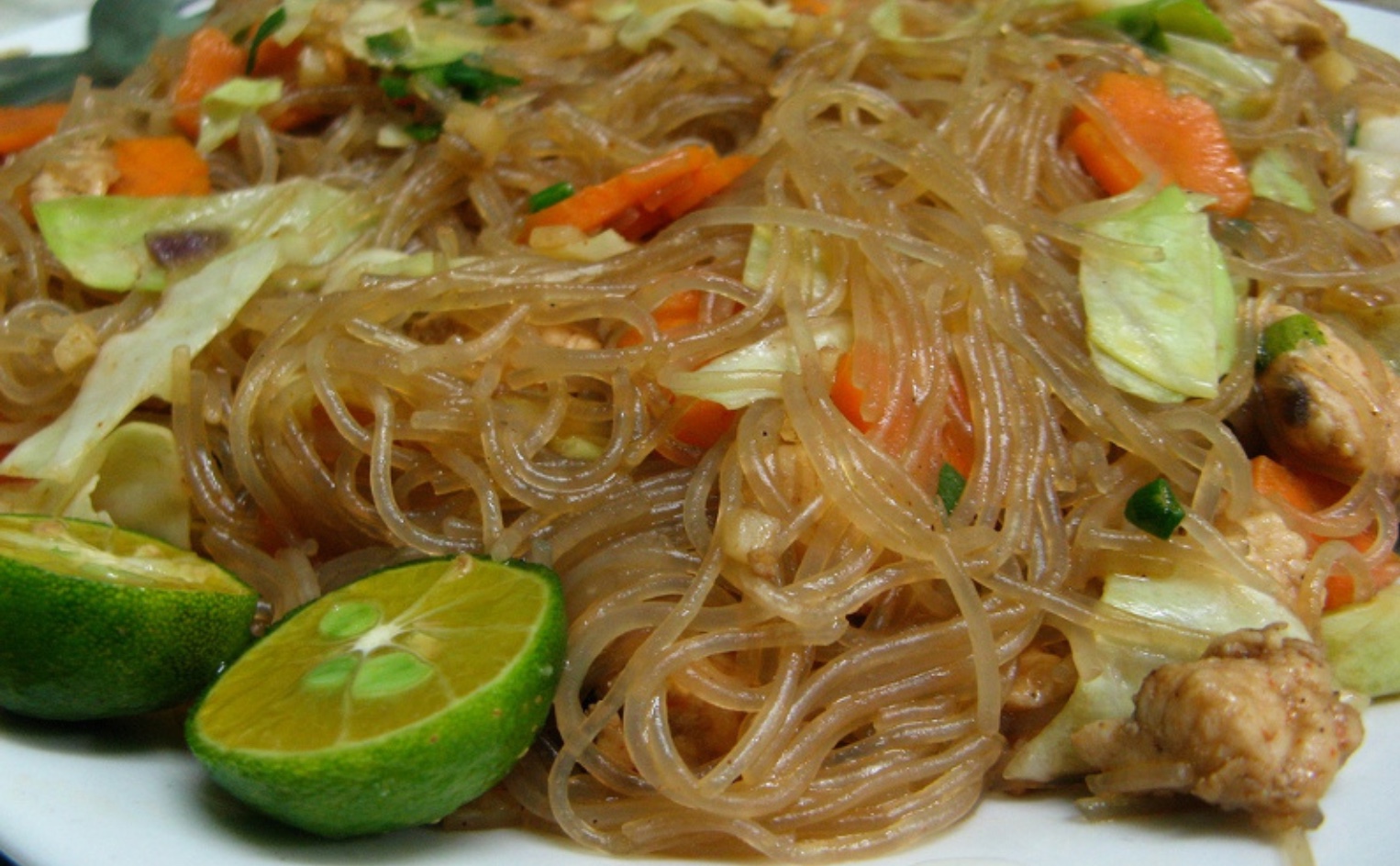Easy Filipino food is a culinary tapestry that weaves together the flavors and traditions of a vibrant culture. From the bustling streets of Manila to the tranquil shores of Palawan, Filipino cuisine has captivated hearts and palates worldwide with its vibrant flavors, fresh ingredients, and heartwarming simplicity.
Embark on a gastronomic adventure as we explore the diverse world of easy Filipino dishes, uncovering the secrets of their tantalizing tastes and the cultural significance they hold in Filipino households and communities.
Introduction
Filipino cuisine has gained immense popularity worldwide due to its accessibility and distinct flavors. The ease of preparing Filipino dishes makes them a staple in Filipino households and communities, contributing to their cultural significance.
Cultural Significance
Easy Filipino food holds a special place in Filipino culture, serving as a symbol of family and community. The simplicity and affordability of these dishes allow families to bond over shared meals, creating cherished memories. Moreover, they play a crucial role in community gatherings, festivals, and celebrations, fostering a sense of unity and belonging.
Common Ingredients and Cooking Methods
Filipino cuisine is known for its vibrant flavors and comforting dishes that often showcase the country’s tropical bounty. At the heart of these delectable creations lies a repertoire of staple ingredients and time-honored cooking methods that have been passed down through generations.
From the humble rice that serves as the foundation of many meals to the aromatic garlic and onions that form the base of countless sauces, each ingredient plays a vital role in crafting the unique flavors of Filipino dishes.
Staple Ingredients
- Rice:The ubiquitous staple that accompanies almost every Filipino meal, providing sustenance and a base for flavorful dishes.
- Garlic and Onions:These aromatic duo form the foundation of many Filipino sauces, imparting a savory depth of flavor.
- Vinegar:A staple ingredient that adds a tangy acidity to dishes, balancing out rich flavors and creating a refreshing contrast.
- Fish Sauce:A fermented fish sauce that adds a unique salty and pungent flavor to dishes, often used as a dipping sauce or marinade.
li> Soy Sauce:A versatile seasoning that enhances umami and adds a salty savoriness to dishes.
Cooking Methods
Filipino cuisine showcases a diverse range of cooking methods, each imparting its own distinct character to dishes.
Stir-frying
Stir-frying is a popular technique that involves cooking ingredients quickly in a hot wok or pan with a small amount of oil. This method allows for even cooking and retains the vibrant colors and textures of the ingredients.
Grilling
Grilling is another prevalent cooking method in Filipino cuisine. It involves cooking food over an open flame or hot coals, infusing it with a smoky flavor and creating a delectable char.
Stewing
Stewing is a slow-cooking method that involves simmering ingredients in a flavorful liquid, often with vegetables and herbs. This technique tenderizes tough cuts of meat and creates rich and comforting dishes.
Popular Easy Filipino Dishes: Easy Filipino Food

Filipino cuisine is known for its flavorful and hearty dishes, and many of them are surprisingly easy to prepare. Here’s a table showcasing four popular easy Filipino dishes, perfect for beginners or busy weeknights:
The dishes listed below are all simple to make and can be prepared with minimal effort. They are also packed with flavor and can be enjoyed by people of all ages.
Easy Filipino Dishes
| Dish Name | Ingredients | Cooking Instructions | Description |
|---|---|---|---|
| Adobo | Pork or chicken, soy sauce, vinegar, garlic, bay leaves, black peppercorns | Marinate meat in soy sauce, vinegar, garlic, bay leaves, and peppercorns for at least 30 minutes. Brown meat in a pan, then add marinade and simmer until meat is tender. | A classic Filipino dish made with meat braised in a savory sauce of soy sauce and vinegar. |
| Sinigang | Pork or fish, tamarind, onions, tomatoes, green beans, okra | Boil pork or fish in water with tamarind, onions, tomatoes, green beans, and okra. Simmer until vegetables are tender. | A sour and savory soup made with meat or fish cooked in a tamarind broth. |
| Kare-kare | Oxtail or beef, peanut butter, onions, tomatoes, green beans, eggplant | Brown oxtail or beef in a pan. Add peanut butter, onions, tomatoes, green beans, and eggplant. Simmer until meat is tender. | A rich and savory stew made with meat cooked in a peanut butter-based sauce. |
| Pancit Bihon | Rice noodles, pork or chicken, shrimp, vegetables (such as carrots, celery, and cabbage) | Cook rice noodles according to package directions. Stir-fry pork or chicken, shrimp, and vegetables. Add cooked noodles and toss to combine. | A stir-fried noodle dish made with rice noodles, meat, shrimp, and vegetables. |
Health Benefits and Dietary Considerations
Easy Filipino dishes are not only delicious but also nutritious. They are typically made with fresh vegetables, fruits, and lean proteins, which provide a good balance of vitamins, minerals, and fiber.
Dietary Considerations
Easy Filipino food can be easily adapted to fit various dietary restrictions. For example, vegetarian and vegan dishes can be made by substituting plant-based ingredients for meat and dairy products. Gluten-free dishes can be made by using gluten-free ingredients, such as rice flour or cornstarch.
Filipino Food Culture and Easy Dishes

Filipino cuisine is renowned for its vibrant flavors and diverse dishes, which play a central role in Filipino gatherings and celebrations. Easy Filipino food holds a special place in these occasions, as they facilitate sharing, bonding, and a sense of community.
Filipino dining is deeply communal, with meals often shared family-style on large platters. Easy dishes, such as adobo, sinigang, and kare-kare, are ideal for this communal dining experience, as they can be easily shared and enjoyed by all.
The Importance of Easy Dishes in Filipino Gatherings
The simplicity and versatility of easy Filipino dishes make them perfect for large gatherings. They can be prepared in advance, allowing hosts to focus on socializing with guests. Additionally, these dishes are often budget-friendly, making them accessible to families of all income levels.
Conclusion

In summary, easy Filipino food offers a delicious and convenient way to experience the vibrant flavors of Filipino cuisine. Its simplicity and accessibility make it an ideal choice for both novice and experienced cooks, and its popularity extends beyond the Philippines to a global audience.
Whether you’re a seasoned foodie or just starting to explore the world of Filipino cooking, we encourage you to embrace the ease and enjoyment of these dishes and discover the culinary treasures that await you.
Significance of Easy Filipino Food in Filipino Culture
Easy Filipino food plays a vital role in Filipino culture, reflecting the country’s warm hospitality and love for sharing meals. These dishes are often served at family gatherings, celebrations, and community events, fostering a sense of togetherness and camaraderie. The simplicity and affordability of these dishes also make them accessible to people from all walks of life, contributing to their widespread popularity and cultural significance.
Appeal to a Wide Range of Audiences
Easy Filipino food appeals to a wide range of audiences, including busy professionals, students, and families with limited time for cooking. The ease of preparation and the availability of ingredients in most grocery stores make it a convenient option for those who want to enjoy authentic Filipino flavors without spending hours in the kitchen.
Additionally, the versatility of these dishes allows for customization and experimentation, making them suitable for different dietary preferences and taste buds.
Expert Answers
What are the staple ingredients used in easy Filipino dishes?
Easy Filipino dishes often rely on pantry staples such as rice, garlic, onions, tomatoes, soy sauce, vinegar, and fish sauce, which add depth of flavor and umami to the dishes.
How can I make easy Filipino dishes healthier?
To make easy Filipino dishes healthier, opt for lean proteins, increase the proportion of vegetables, use whole grains instead of refined grains, and limit the use of oil and sodium.
Are there easy Filipino dishes suitable for vegetarians?
Yes, there are several vegetarian-friendly easy Filipino dishes, such as sinigang na gulay (vegetable soup), tofu adobo, and pinakbet (vegetable stew).

